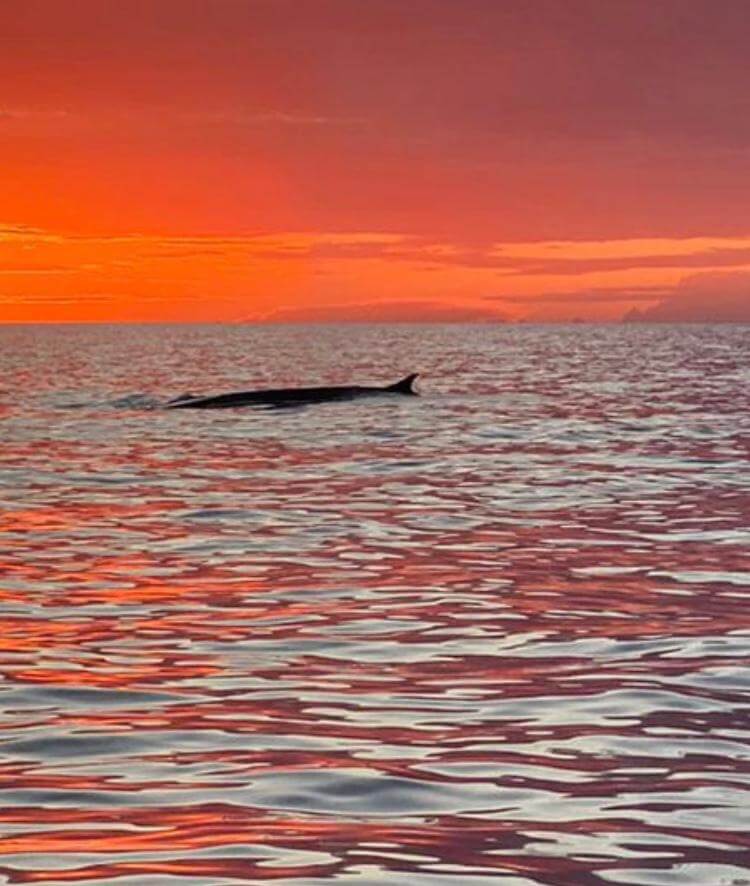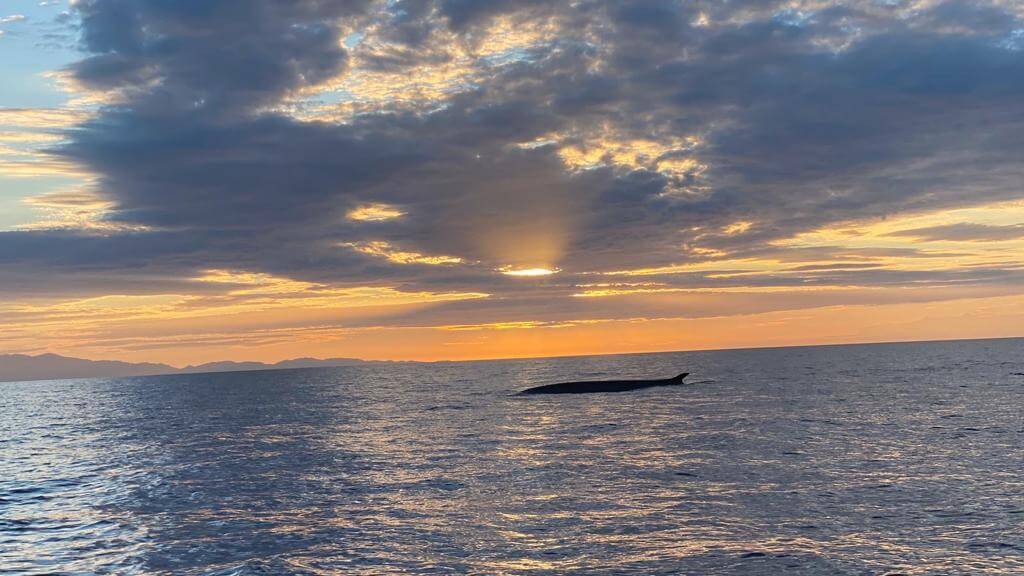When people think of these gigantic marine mammals, they usually think of them in the oceans – far from Europe’s coasts. In fact, however, whales also frolic in the Mediterranean. At Capo Sant’Andrea, the northwestern tip of Elba, the chances of spotting these giants are particularly good. Whale watching in Italy, a very different adventure, off the beaten path.
Attentive eyes can’t miss them – the gray or black-brown backs with the pointed fin. Suddenly they appear, drifting like mysterious submarines on the rippling waves, only to disappear just as quickly under them again. When fin whales appear in the northern Tyrrhenian Sea – off the coasts of Tuscany and Liguria – it gradually becomes summer in the northern hemisphere. Water masses with nutrient-rich salts rise from the depths. The penetrating sunlight causes huge amounts of phytoplankton to develop in them, and as these micro-sea plants multiply, so does krill. This is what marine biologists call the tiny, shrimp-shaped crustaceans that feed on phytoplankton.
“Whales, in turn, target krill,” says biologist Alessandro Giannì. The miniature crustaceans are the giants’ main food. An adult fin whale needs two tons of krill – day after day. The marine mammals track down their meal during dives at depths of 325 feet or more. With amazing agility, the up to 65-feet-long giants circle the smallest marine animals. Once they have rounded up a dense shoal, they eat it. Together with the krill, enormous amounts of water enter the whale body, up to 80 tons. This causes the animals to double their body volume for a short time. They squeeze the liquid out again through their baleen. The crabs, on the other hand, get stuck on the baleen sieve.
North with the current
Until fall there is enough krill in the northern Tyrrhenian Sea, and until then the giants roam in these waters. The northern Tyrrhenian Sea and the Ligurian Sea with the island of Elba, Capo Sant’Andrea and the other islands of the Tuscan archipelago lie in the middle of the “Santuario dei Cetacei”, the “Sanctuary of the Whales”. In this protected area, the marine mammals are supposed to remain largely untroubled by humans. Who would like to experience the fin whales, after the blue whales the largest living beings of the today’s world, from the proximity, can go with numerous providers on whale safari. Of course, the observation tours are carried out under strict nature and animal protection conditions.

The fact that fin whales are sighted in large numbers off Elba and especially at Capo Sant’Andrea has to do with their “travel behavior,” explains marine expert Giannì. When they leave their winter quarters in the southern Mediterranean and head north in the spring, they follow a certain current. This runs along the Tyrrhenian coast. It splits off the coast of Elba. One branch flows between the islands of Elba and Corsica. The other flows first into the Piombino Channel and then along the north coast of Elba. Whales following this current are guided by the dynamics of the water to Capo Sant’Andrea.
The biggest secret of the Mediterranean
Generally, the sea giants keep at least a mile distance from the coast. However, guided by the current, they often also appear in the bay of Elba’s port Portoferraio, where they come much closer to land. When fall arrives, Balaenoptera physalus, its scientific name, begins its return journey. The whales then take a similar route, once again passing by Elba’s northwestern tip. Dozens of times, many of them travel this north-south passage in the course of their lives. Fin whales can live to be around 100 years old. When the animals return at the beginning of summer, they have their young in tow. “We still don’t know exactly where the whale calves are born,” says Alessandro Giannì. “This is probably the best-kept natural secret of the Mediterranean.”
You can find more info on https://www.caposantandrea.it/en/




